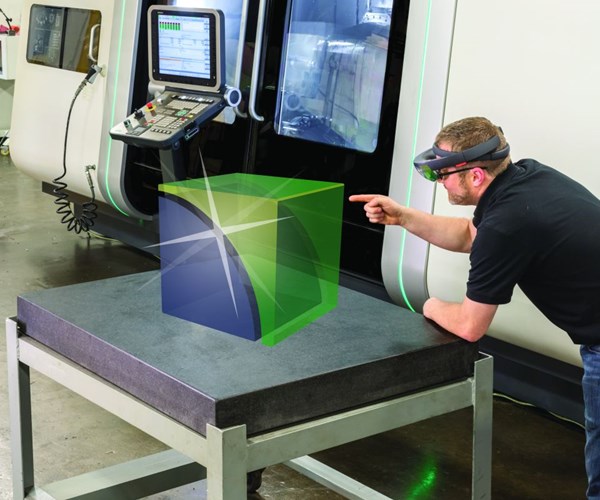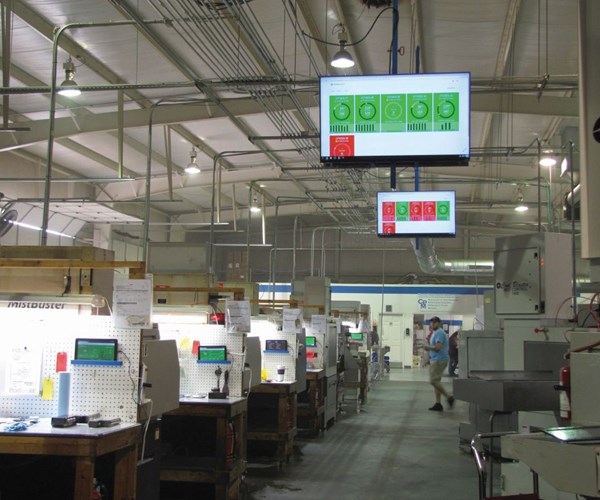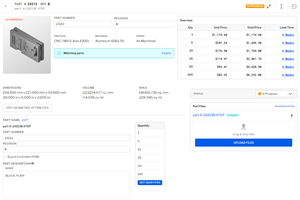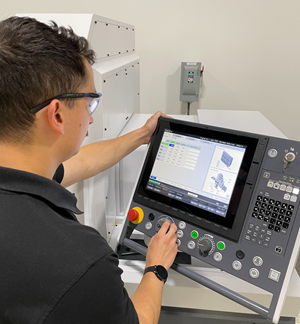5 Essential IIoT Definitions
Here are few of the most common terms used in discussions and articles about developments that promise seismic shifts in virtually every sector of manufacturing.
Share






The cover of our August IMTS issue illustrates the concept of augmented reality in manufacturing—an example of the melding of physical and virtual that lies at the heart of IIoT.
Making sense of all the terms and catchphrases being bandied about to describe the Industrial Internet of Things can be difficult. Nonetheless, a common vocabulary is critical to facilitating the education required for broader development and adoption of technology that promises seismic shifts in virtually every sector of manufacturing.
In my position as an editor, precise language is particularly important. That’s why I’ve begun compiling a list of definitions for some of the most common words and phrases I’ve encountered in my own reading on the subject. Although by no means comprehensive, this practice has proven helpful in keeping my copy (and my head) as clear as possible on a subject that’s increasingly important to our readers. Beginning with a definition of IIoT itself, here are the meanings of five common terms associated with this technology:
1. Industrial Internet of Things (IIoT) is a term derived from the broader concept of the Internet of Things (IoT), which describes the increasing interconnectedness of the stuff we all use in our daily lives to one another and to the internet (or an intranet, or both). The idea is not just to exchange and collect data, but to act on that data to make things better. (One commonly cited example is a “smart” thermostat.) IIoT is the same concept applied to industry. Examples range from “smart” buildings and power grids to “smart” transportation networks. IIoT might initially take the form of a machine tool status monitoring system.

Large-screen TVs keep everyone at CNC Swiss-turning specialist Carolina Precision Manufacturing (CPM) aware of how closely machines are meeting their goals.
2. Data-driven manufacturing implies that manufacturing processes are driven forward by data—by facts, figures and other verifiable information, as opposed to guesses, assumptions and intuition. (It’s also the name of an MMS Online Zone where you can find everything we’ve written about IIoT).
3. Digital thread describes a closed loop of data from design all the way through engineering, a loop that often includes multiple, disparate processes conducted in multiple, disparate facilities. (A project recently instituted by the National Institute of Standards and Technology (NIST) is a prime example.)
4. Industry 4.0 is a term originally coined by the German government (“Industrie 4.0”) for a set of strategic initiatives aiming to expand development and adoption of the IIoT. The idea behind this term is that IIoT and cloud-computing technology—key ingredients of the so-called “smart factory”—are driving a fourth industrial revolution (following steam power, mass production and the digitalization of the manufacturing space, respectively).
5. Cyber-physical system (CPS). This is a specific term for what people mean when they talk about the “smart” technology that facilitates the IIoT. The National Science Foundation describes CPS as “engineered systems that are built from, and depend upon, the seamless integration of computational algorithms and physical components.”
In English, this means a physical device that’s controlled or monitored by a computer. Computer monitoring and/or control implies a connected device—one that can generate, send and receive data over a network. It also implies a feedback loop. That is, the device itself, or others to which it is networked, act upon data in real time to adapt to changing conditions. A basic example is an industrial vending system that automatically issues a purchase order when inventory reaches a certain level, or a machine with embedded temperature sensors that shuts off automatically when it gets too hot.
Although the CPS is the very root of the connection between the physical and virtual—the connection that, in turn, lies at the heart of the IIoT—this technology is still in its infancy. Continued development of these systems will lead to the much-touted “smart factory” of the future, in which facility-wide networks of connected machines use sensor data to automatically adjust all manner of process parameters.
Do you have a different understanding of any of these terms and phrases? What would you add to the list? Send an email or comment below.
Related Content
Give Job Shop Digitalization a Customer Focus
Implementing the integrated digital technologies and automation that enhance the customer's experience should be a priority for job shops and contract manufacturers.
Read MoreSwiss-Type Control Uses CNC Data to Improve Efficiency
Advanced controls for Swiss-type CNC lathes uses machine data to prevent tool collisions, saving setup time and scrap costs.
Read MoreCan Connecting ERP to Machine Tool Monitoring Address the Workforce Challenge?
It can if RFID tags are added. Here is how this startup sees a local Internet of Things aiding CNC machine shops.
Read MoreFour Questions (& Answers) About Data-Driven Process Improvement at CNC Job Shops
How can shops can make informed decisions using data-driven feedback to improve shopfloor efficiency and profitability? And how will these technologies differ between high- and low-volume production?
Read MoreRead Next
5 Rules of Thumb for Buying CNC Machine Tools
Use these tips to carefully plan your machine tool purchases and to avoid regretting your decision later.
Read MoreRegistration Now Open for the Precision Machining Technology Show (PMTS) 2025
The precision machining industry’s premier event returns to Cleveland, OH, April 1-3.
Read MoreSetting Up the Building Blocks for a Digital Factory
Woodward Inc. spent over a year developing an API to connect machines to its digital factory. Caron Engineering’s MiConnect has cut most of this process while also granting the shop greater access to machine information.
Read More





















.jpg;maxWidth=300;quality=90)








